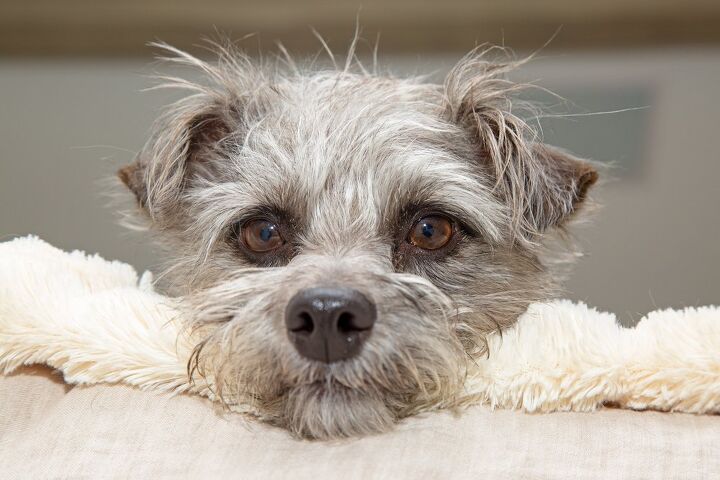Pinny Poo


About Pinny Poo
The feisty little Pinny Poo brings together the loyal and protective nature of the Miniature Pinscher (Min Pin) and the smart, playful traits of the Miniature Poodle to produce a fun little family dog with a wilful yet eager-to-please personality. His high energy levels and alert nature make him ideal watchdog material.
The feisty Pinny Poo brings together the protective nature of the Miniature Pinscher and the playful personality of the Miniature Poodle.
The Pinny Poo is a Designer Dog that likely originated back in the 1980s or 1990s when mixing and matching pure-bred dogs first became popular. The practice produces puppies that carry the desired traits of both parent breeds – typically a healthier, smaller, hypo-allergenic or gentler form of a popular breed.
The Pinny Poo comes from two different purebred dogs which means he doesn’t qualify to join the American Kennel Club (AKC) roster of purebreds however both of his parent breeds are long-time members of the coveted club; the Poodle joined AKCs “non-sporting” group in 1887 while the Miniature Pinscher became a member of the “toy” group back in 1925.
The Pinny Poo is a high-energy dog so will require a kibble specifically designed to meet his age, size and activity levels. Because he has a tendency to become obese, care should be taken to avoid carb-heavy foods that will cause him to want to overeat to feel full. Poodle DNA in this dog brings potential digestive issues including bloat, so opt for a low-fat food and plan to feed him 2 to 3 times a day versus allowing him to free feed.
The Pinny Poo is an alert little pooch.
Your Pinny Poo is a quick study when it comes to picking up new commands however patience will be needed throughout the process because he doesn’t always want to obey instruction. Take a firm, consistent approach and establish yourself early on as his pack leader. If you aren’t getting results, consider bringing in a professional. As with most dogs, rewards-based training with lots of praise and treats for a job well done will help expedite the process.
Your little Pinny Poo is a lightweight, coming in at no more than 6 to 10 pounds when fully grown.
The Pinny Poo is an alert little pooch and while his typically quiet demeanor makes him ideal for apartment living, his protective personality means he will bark to alert his owner to strangers and therefore has great watchdog potential. While he loves anything family-oriented, does well with kids and other pets, this loving yet willful little dog can become possessive (of both his owner and his toys) if not properly socialized at a young age.
As with most Designer Dogs, the Pinny Poo will side-step many of the health issues that occur with his pure-bred parents. That said, its always important to know what your new pup could inherit and in this instance, he can be prone to digestive and joint issues from the Poodle as well as epilepsy and a kidney disease called Addison’s.
Pinny Poos are a healthy little dog that will typically live between 10 and 15 years.
For a small dog, the Pinny Poo loves to be active and will need enough space to run, play and burn off energy throughout the day. A fenced yard with lots of interactive playtime is an ideal addition to his daily walks, as is a gated off-leash park where he can interact with other dogs. He is very quick and does have a high tendency to wander so ensure any dog park is secure.
The willful Pinny Poo’s protective nature makes him a great potential watchdog.
Also known as the Min Pin Doodle, Min Pin Poo, Miniature Pinscherdoodle, Miniature Pinscherpoo, Pinnypoo and Pinny-Doodle, the Pinny Poo is not recognized by the American Kennel Club (AKC) however he is a member of the Designer Breed Registry (DBR), American Canine Hybrid Club (ACHC), Designer Dogs Kennel Club (DDKC), Dog Registry of American, Inc. (DRA) and the International Designer Canine Registry (IDCR).
The Pinny Poo can inherit the short, curly coat of the Poodle or the flat, smooth coat of the MinPin and either way, he will be a low- to non-shedding dog. Brushing just 1 to 2 times per week should be sufficient to keep him looking his best. If he does lean more towards the Poodle, infrequent visits to the groomers may be required to maintain his coat shape. Because small breed dogs can be prone to dental issues, brush his teeth twice weekly and plan to inspect and clean his ears weekly to avoid infection that can occur in floppy eared breeds.
Pinny Poo pups are small and care should be taken when being handled – particularly with young kids. Because he can grow to be a stubborn little dog, early socialization is important to expose him to new faces and surroundings. With joint issues a potential problem later in life, leash training and exercise should be introduced gradually and with an eye toward protecting tiny limbs from over-exertion.
Photo credit: Susan Schmitz/Shutterstock; Anna Hoychuk/Shutterstock; Mali lucky/Shutterstock

Sharing space with three seriously judgy Schnoodles and a feline who prefers to be left alone. #LivingMyBestLife
More by Mary Simpson

























